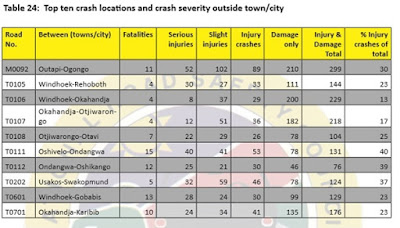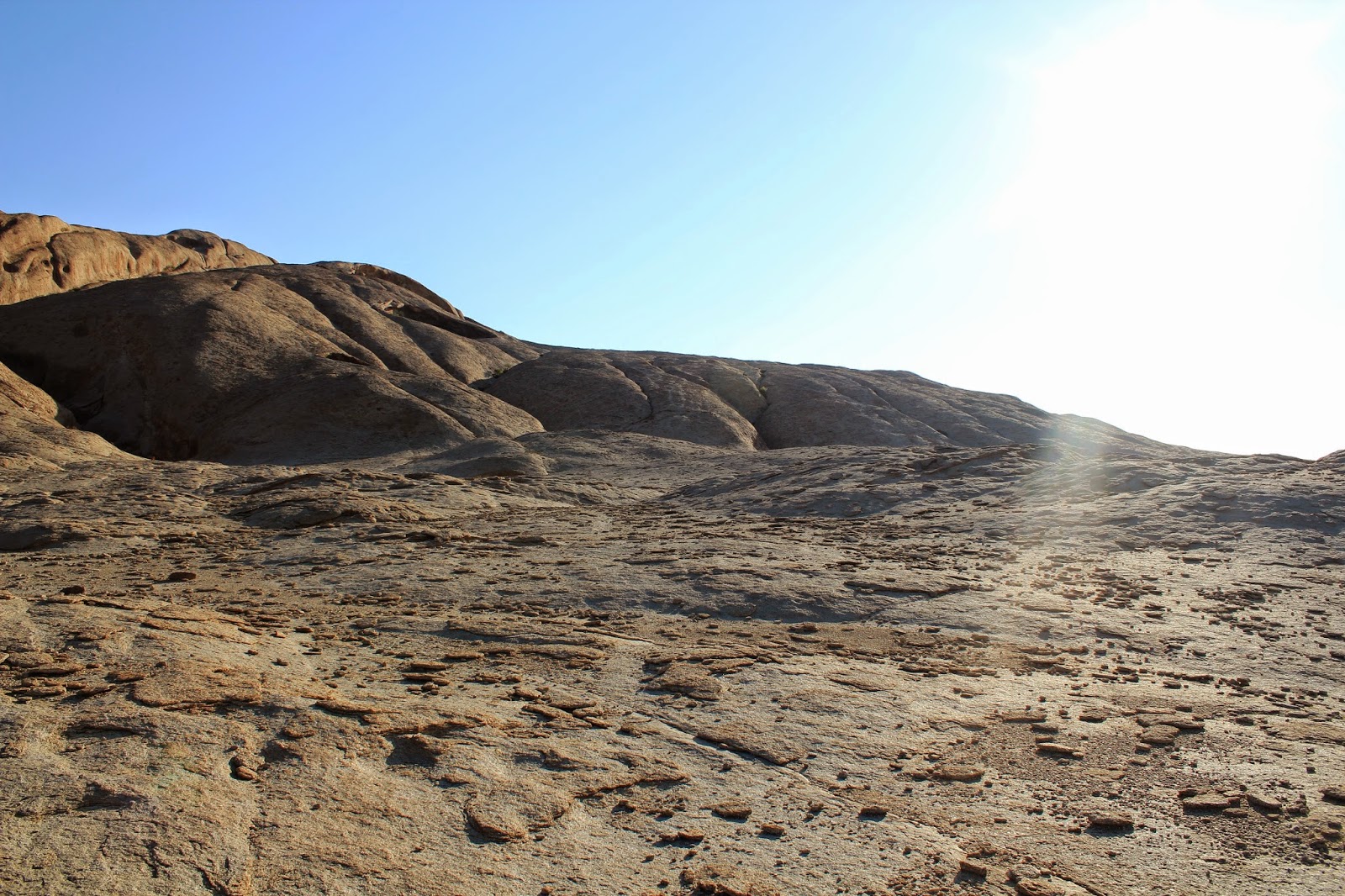Fatal Recklessness – Namibia’s road carnage
The
year is 2017, Donald Trump is president of United States of America, and North
Korea has the western world scared shitless. You are not dreaming. But this has
nothing to do with the aforementioned, not in the slightest, this concerns cars
and death.
In
Namibia you’re more likely to die in a car collision than from cancer, 53% more
likely says the University of Michigan’s Transportation Research Institute. Every
single time you get in a car could be the last time anyone sees you alive,
every road trip is a dice with death and travelling by motor vehicle has become
Russian roulette. In 2014 Namibia was
ranked 1st in the world for fatal car accidents per 100 000 inhabitants by the World Health Organisation (WHO). I know
it’s hard to believe. Namibia is known more for amazing landscapes that belong
on a computer desktop, plentiful sunshine, and that one mammoth episode of The Grand Tour that had Jeremy Clarkson
professing his love for the Namib Desert. However, the problem is real, and it
keeps getting worse. On the weekend of the 28th April – 01st
May 2017, 31 people died countrywide in car accidents, worrying statistics for
a country with only two million inhabitants.
I
know what you’re thinking, the roads are probably shit! You are wrong; Namibia
has one of the best road infrastructure networks in Africa, and some really
insane traffic fines. Speeding in this part of the world is a sport for those
with deep pockets, not us mere peasants, yet we still take the risk, and as a
result fatal car accidents keep piling up. To make it worse, most of the
victims are young people in the prime years of their lives; we’re literally
killing the future of Namibia. Sentiments echoed by George Simaata, former
chair of the national road safety council, “Many families are driven into poverty by the loss of
breadwinners and the added burden of having to care for members who become
disabled as a result of injuries sustained in road traffic accidents.”
The Roads Authority (RA), which maintains the road network, is alarmed since
most of the fatal accidents are head on collisions; clearly, we are suicidal and
have a real disrespect for death.
Which
leads me to my conclusion: The carnage on Namibian roads is a sign of driver
recklessness. There are two types of recklessness: 1) Recklessness and 2)
Stupid Recklessness.
Let
me explain: We like speed in this part of the world, and even though it’s
illegal to drive above the 120 km/h speed limit, most drivers fly around as if
death itself is chasing them. We’ve all been there, you’re cruising along and
lord behold you come up behind a truck or a slow moving car. You check and the coast is clear but just as
you reach for the indicator, the road curves. You can’t quite see around the
curve, but you think there’s enough distance and your car has enough power to
pull off a Formula One move. So, you
put your foot down and pop out from the other cars slipstream, at that moment
the oncoming car become visible and flashes you before you luckily sneak back
in front of the vehicle you were over taking. That is Type 1 recklessness,
overtaking into a curve or on a blind rise.
Stupid
Recklessness is different, but even more dangerous, this time you can see what
is coming, yet you still try the audaciously stupid. Trying to overtake several
cars on a high traffic volume road is Type 2 recklessness. We’ve all been
there, it’s a long weekend and you’re stuck on a major highway. You’re growing
impatient behind convoy of slow moving cars and you really need to get moving
because a long road lies ahead. I know what you’re thinking, if you can see
oncoming traffic then it’s not so bad right? Wrong! Our roads are pretty good,
so most of us are speeding, our cars don’t cruise, they fly, so the chance of
you running out of road before you overtake that last car in the convoy is very
high, and in most cases when you get it wrong you become a statistic.
Here
is what the statistics say on the theory of recklessness: The Namibian police
reported 722 fatalities from car accidents in 2016, that number has doubled
from what is was in 2012, per 100 000 inhabitants it ranks us first on the WHO
rankings for 2016. According to the Namibia Road Safety Council (NRSC) statistical
report of 2009, most fatal accidents were recorded in the months of May, June,
August, and December – months with most holidays and long weekends. This
relates the correlation between high traffic volumes and occurrence of fatal
accidents. The NRSC statistical report of 2015 states that the top ten
locations of fatal car crashes includes the notorious Okahandja – Otjiwarongo
road, the Windhoek – Okahandja road, and the Swakopmund – Karibib – Okahandja
road. These roads are either insanely busy, or have topography that obscures
vision (curves and rises). Also notable from the 2009 report is that the Ogongo
– Outapi and Ondangwa – Oshivelo roads (pedestrian and donkey country) have
high fatalities, mostly due to the high number of animals at the road side and
the proximity of business activity to
the main road (high number of pedestrians crossing highways). These factors make
overtaking on these roads potentially dangerous even when travelling under the
speed limit.
 |
| location of high fatality car accidents outside major Namibian towns (2009 NRSC statistical report). |
 | ||
| location of high fatality car accidents outside major Namibian towns (2015 NRSC statistical report). |
The
carnage of Namibian roads is by no means over and won’t be abated anytime soon,
because we are pouring and will continue pouring millions into upgrading the
road infrastructure. The government is delivering on its duty, bumpy roads will
become more even, narrow roads will be widened, unmarked roads with no road
signs will be marked up and the dangerous zones properly demarcated, and
although the aim is to ease congestion on the roads and avoid traffic jams, the
result is that drivers will speed even more and attempt even more ludicrous
overtaking manoeuvres. But, I believe that attitudes to road safety and general
driver behaviour will change eventually, it’s like in the 90’s; we were all
ignorant until someone we knew died of AIDS, then we reached for the condoms
and started awareness campaigns like our lives depended on it. Until it
directly affects you, you will always think that it’s not your problem,
hopefully it doesn’t come to that and our attitude and etiquette on the road
changes so what we make them safer, instead of what they are now: highways to
hell. Accidents cannot be avoided, no matter how many preventative measures you
put in place, but the number of people we’re killing in car accidents is
abnormally high, it’s pure madness.


Comments
Post a Comment